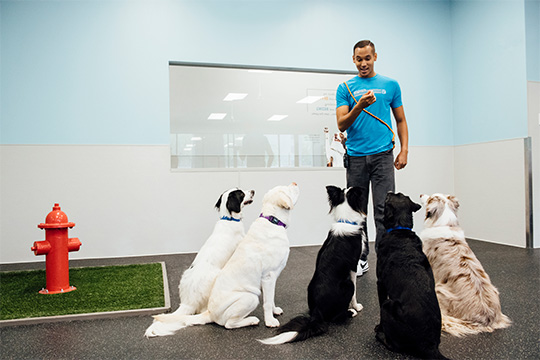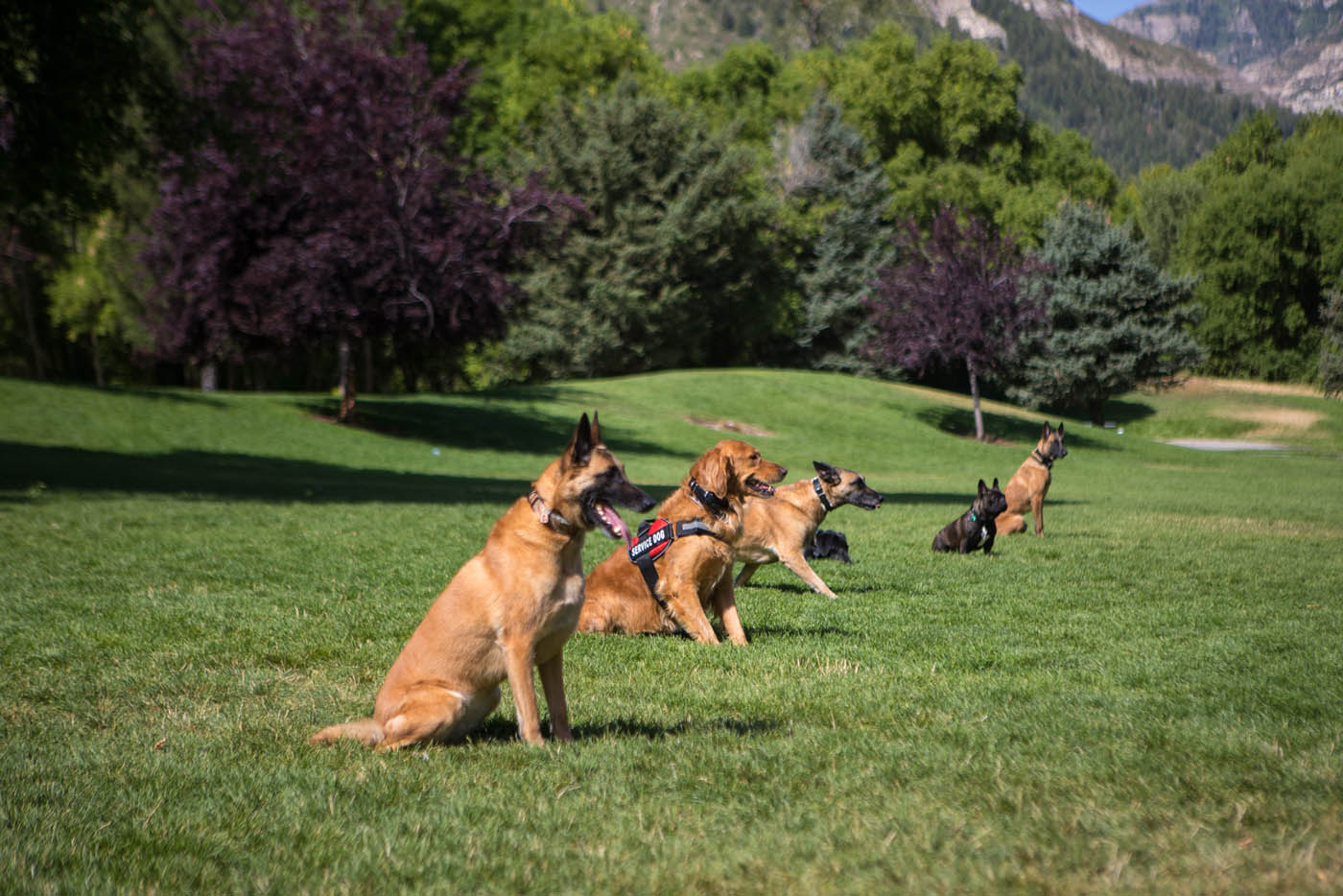Master Dog Training at Home with These Simple Techniques and Tools
Master Dog Training at Home with These Simple Techniques and Tools
Blog Article
Novice's Overview to Effective Pet Dog Training in your home
Efficiently training a canine at home needs a nuanced understanding of canine actions and effective communication approaches. Establishing clear training goals, using top quality benefits, and preserving uniformity throughout household participants are important components. Incorporating training right into daily regimens can boost both engagement and retention.
Recognizing Dog Behavior
Recognizing canine actions is important for effective training and fostering an unified relationship in between human beings and their canine buddies. Dogs interact mostly with body language, vocalizations, and faces, making it important for owners to interpret these signals accurately. Recognizing habits such as tail wagging, growling, or trembling can provide insights right into a canine's mood and intents.

Common behavior concerns, such as hostility, anxiety, or excessive barking, usually stem from misunderstandings or unmet requirements. Observing and resolving these issues promptly can prevent escalation and make certain a positive training experience. By fostering a deep understanding of pet behavior, owners can tailor their training methods to fit their canine friends, ultimately resulting in a contented and mannerly pet dog.
Necessary Training Devices
A fully equipped training space can significantly improve the efficiency of pet dog training in the house. Vital training devices make certain that both the trainer and the canine can engage in efficient sessions that cultivate knowing and bonding.

Spending in a durable leash and a comfy, well-fitting collar or harness is essential for safety and security and control. These tools assist establish borders and make sure the canine continues to be protected during training. Furthermore, a designated training location, devoid of distractions, help concentration for both the pet dog and the trainer.
Training help such as training pads, cones, or agility devices can also boost the experience by introducing selection and obstacles. Finally, having a notebook or digital application for tracking development can be vital, allowing you to keep in mind successes and locations for enhancement. Utilizing these necessary tools will certainly develop a positive training environment and lay the foundation for efficient understanding.
Creating a Training Routine
Developing a regular training routine is vital for reliable dog training at home. A well-structured routine not just aids in reinforcing wanted behaviors but also supplies your pet with a complacency and predictability. To develop an effective training routine, begin by identifying particular training objectives, such as standard commands, chain strolling, or housebreaking.
Choose an assigned time every day for training sessions, ideally when your pet dog is sharp and receptive. Procedure ought to be short, approximately 5 find to 15 minutes, to maintain focus and avoid tiredness. Consistency in timing and environment will enhance your canine's knowing experience.
Integrate training into everyday activities to reinforce abilities. As an example, technique commands during strolls or nourishment, which incorporates discovering right into all-natural regimens. Furthermore, remain flexible and readjust the regular as needed, fitting your canine's energy degrees and state of mind.
Positive Reinforcement Strategies
Positive reinforcement methods are basic to reliable dog training, promoting desired actions with benefits instead of punishment. This method uses positive stimulations, such as treats, praise, or play, to urge canines to repeat certain actions. The cornerstone of this approach is timing; incentives ought to be given immediately adhering to the preferred habits to develop a clear organization.
When applying positive support, it is vital to select benefits that are encouraging for your canine. High-value deals with, such as tiny items of hen or cheese, can be specifically efficient during training sessions. Additionally, differing the rewards can keep your dog's rate of interest and enthusiasm.
Begin with straightforward commands, like "sit" or "stay," and slowly progression to more complicated jobs. Consistency is crucial; guarantee that all relative use the very same commands and benefit systems to prevent complication.
Additionally, it is vital to continue to be patient and avoid frustration. Pet dogs, like human beings, learn at their own rate. By fostering a helpful training setting through positive reinforcement, you can enhance your pet dog's understanding experience while strengthening the bond between you and your fuzzy friend, preparing for successful training results.
Typical Training Obstacles
While training a pet dog in your home can be a rewarding experience, it typically comes with a collection of usual challenges that can evaluate both persistence and uniformity. One prevalent issue is disturbance. Pets might become quickly sidetracked by noises, motions, or also aromas in their atmosphere, see it here making it tough to preserve their focus throughout training sessions.
Another challenge is disparity in commands and reinforcement. It can perplex the pet and prevent progression if household members use various signs or incentives. Establishing a unified method is necessary for reliable interaction.
In addition, pet dogs can experience stress or tension, specifically if they do not understand what is expected of them. This can result in undesirable actions, such as barking or chewing.
Lastly, the timing of reinforcement is essential (Dog training). Delayed incentives can reduce the effectiveness of positive support, as pet dogs may fall short to link the habits with the reward
Getting over these difficulties requires dedication, clear communication, and an organized training plan. Identifying and addressing these usual challenges will certainly lead the way for an extra satisfying and successful training experience in your home.
Verdict
Finally, successful pet dog training at home demands a detailed understanding of canine behavior and efficient interaction methods. By developing clear training goals and using top quality deals with along with positive support, the training process becomes a lot more gratifying for both the trainer and the dog. Uniformity, patience, Related Site and flexibility are important elements that promote knowing. Inevitably, integrating training into everyday regimens boosts the bond between canine and owner, making the experience both satisfying and effective.
Establishing a regular training routine is important for efficient pet dog training at home.Favorable support strategies are essential to efficient canine training, advertising preferred habits with rewards rather than penalty (Dog training). By cultivating a supportive training atmosphere through positive support, you can enhance your pet dog's understanding experience while enhancing the bond in between you and your furry companion, laying the foundation for effective training end results
In final thought, effective dog training at home necessitates a thorough understanding of canine actions and efficient communication methods. By developing clear training goals and using high-quality treats together with positive support, the training procedure becomes a lot more rewarding for both the dog and the trainer.
Report this page